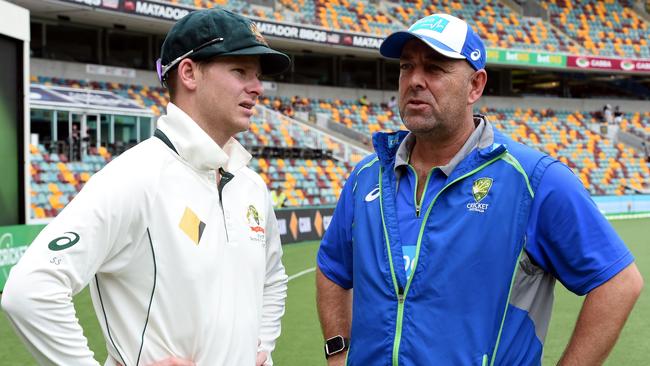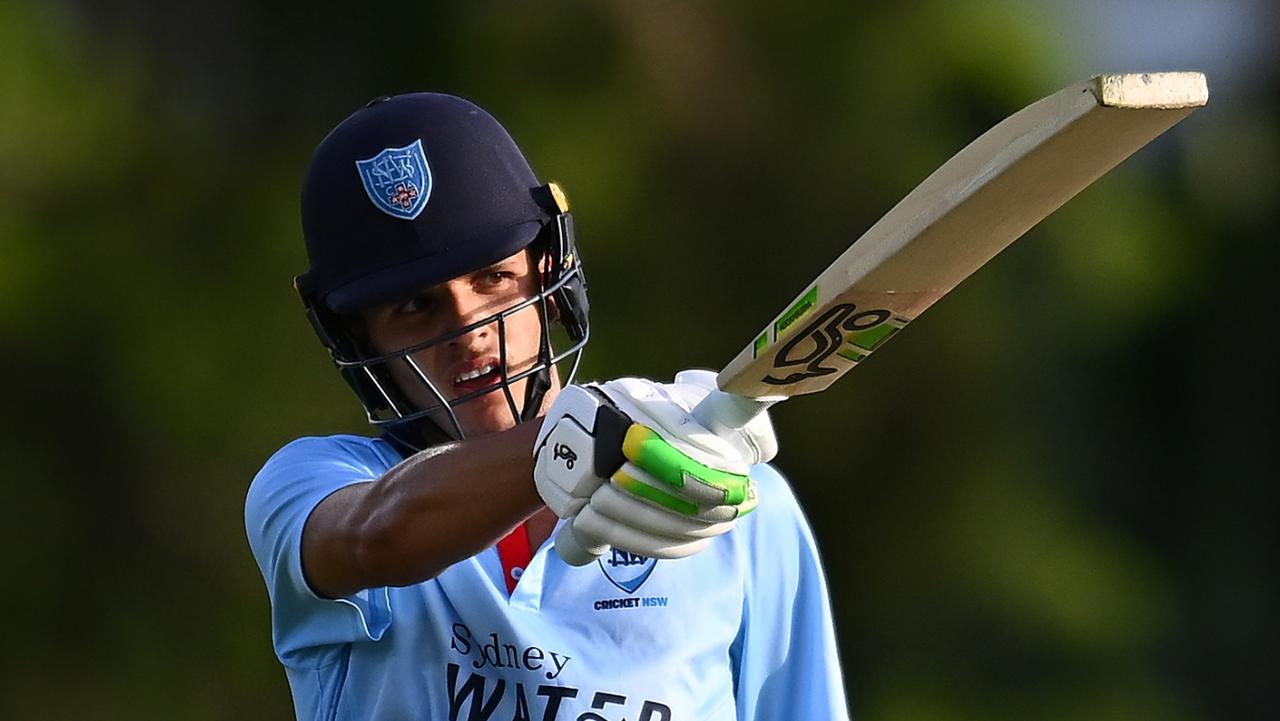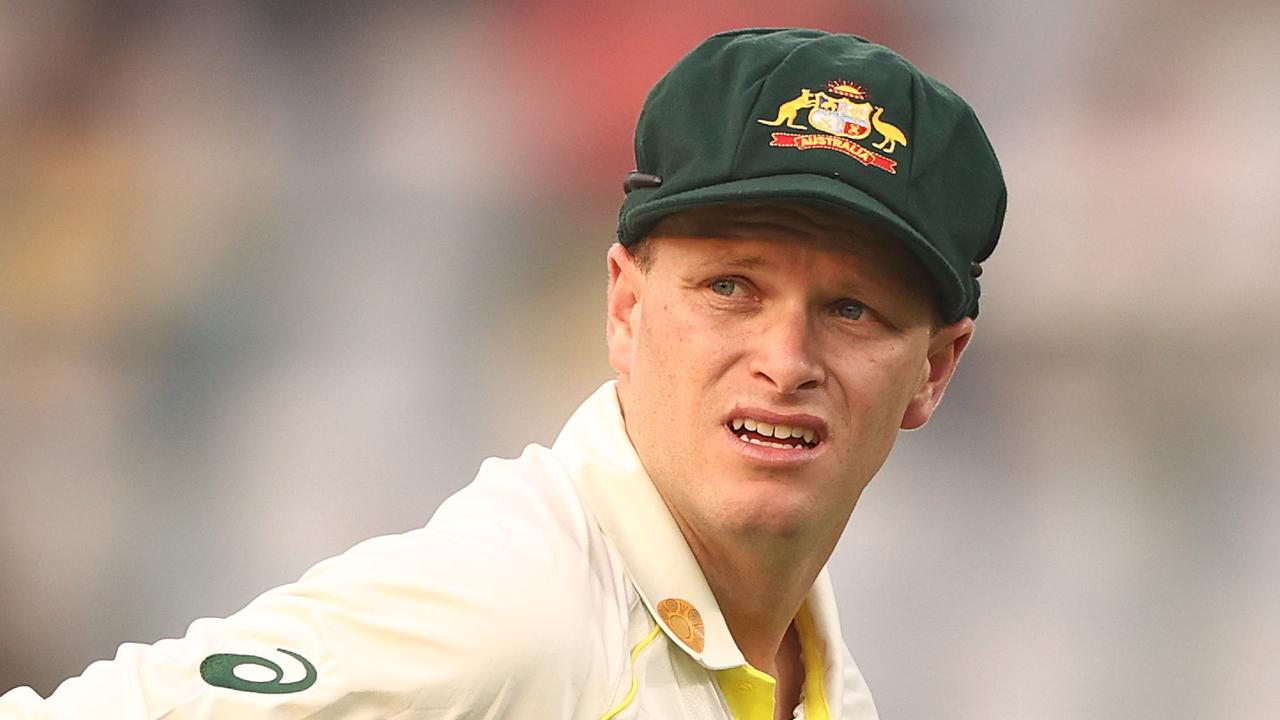Crossing the line: inside the bubble of Australian cricket
It’s a life without a real centre, full of preternaturally gifted but ignorant men whose brittle cockiness, masks weakness and unease.

What is it like to be an elite cricketer in Australia?
It makes more sense to think of a collective of cricketers than it does of footballers: the Australian Cricketers’ Association has 300 current male and female playing members compared to the AFL Players’ Association’s more than 1000. Yet within that are many gradations — of age, aptitude, locality, background, gender, wealth.
Then there are the marked separations of experience. There is no team in Australia like its Test cricket team, first chosen from a clutch of colonies containing barely two million people, and still sporting the colours first worn before Federation. No national side is considered so representative; no national side is quite so elevated and sequestered from those whom they represent.
The players know it, too. Back in the palmy days of the early 21st century, those at Cricket Australia charged with responsibility for dealing with the Australian cricket team spoke of an iron law. For their first 15 Tests and/or 30 one-day internationals, an Australian cricketer would be good as gold — excited, obliging, grateful, and generally happy to be there. After that, negotiations became complicated.
The cricketer would grow expectant, entitled, maybe even a bit surly, harder to persuade to do anything not directly or indirectly related to playing, tending towards the bare minimum of co-operation.
In part this was a response to their privileged status; in part also was it a kind of husbanding of energies in the face of a career’s demands.
We think of cricketers in terms of their on-field performances, of the effort expended in a marathon spell or a giant innings. But the bulk of their time is future-focused, the work that goes to the all-consuming analysis of performance, minuscule adjustments of technique, tiny enhancements in physical prowess, and a general coming to terms with ceaseless scrutiny, both energising and enervating.
Cricket becomes not the most important thing in life; it is life. As one adjusts to that regime, so one must economise elsewhere, guarding one’s diminishing sphere of personal autonomy more jealously.
Does the 15/30 rule still apply? A form of it must. Why? Precisely because not to be changed by the experience would be abnormal. And the best way to think of the Australian dressing room is an extraordinary setting for a group of men otherwise quite ordinary — except for their preternatural giftedness in a certain narrow but highly valued set of specialist skills.
In return for their privileges, they submit to days managed in the minutest degree. Schedules, messages and resources that used to be slipped beneath the hotel room door now arrive via an app from CA’s Athlete Management System, an efficient distribution means, as most players are inseparable from their phones.
The AMS makes reciprocal demands, requiring a constant feed of data from the player about their activity, welfare, recent performances, future objectives. Its dashboard presents eight options accented to playing and training workloads, calibrated minutely. If a player has batted on a certain day, for example, they must account for the elapsed time and balls faced, and whether the activity was “very easy”, “easy”, “moderate”, “moderately hard”, “very hard”, “very, very hard”, “extremely hard”, “sub-maximal” or “maximal”.
A wellness section requires inputs about sleep, soreness, stress and fatigue. “How do you rate your fatigue?” the app asks with quiet insistence: are you “always tired”, “more tired than normal”, “normal”, “fresh” or “very fresh”? Other pages survey “reflections”, on training and on games. Did the player have a “Clear Plan”? Did the player “Stick to the Plan”? How had they gone “Creating a Contest”? Did they achieve “Focus” and “Execute Skills”?
One tiny box on this screen strikes a plaintive note: “Enjoyment”.
Players complete the foregoing dutifully, albeit as much because of the consequences of not doing so. “I fill in my AMS so the S&C (strength and conditioning coach) and the physio don’t get in trouble,” says a Test player. “But it’s just more rope to hang yourself by.”
CA’s Athlete Management System app also contains two self-reporting features related to psychic wellness: every male and female player in the elite system must monitor their Eysenck Personality Questionnaire, an inventory of character traits, and K10 (Kessler Psychological Distress Scale), an index of depression and anxiety.
Yet some aspects of people management remain strangely crude. The call up and/or the drop down, for example, are delivered by phone, briskly, sometimes brusquely.
“At the moment, it’s like this,” says an experienced player. “Cracker (Trevor Hohns) calls and says: ‘You’re dropped.’ You say: ‘OK, what do I do?’ He says: ‘Just do what you’re doing now, go out and make heaps of runs and take heaps of wickets.’ And that’s it. They feel no duty of care. They’re 30 years behind the AFL in that respect.”
It is a life without a real centre. Footballers roll in at their clubs every day, and travel no further than darting interstate. Australian cricketers are always in transit. Tours are shorter than they were, but further away, more frequent and more restricted.
The days of testosterone-fuelled maraudings are mainly past, thanks to the frequent presence of players’ wives and girlfriends, leavening the environment’s artificiality. Yet this can cut both ways, pinning players to their hotels, while breaking the team up when it might be regrouping. “It doesn’t feel normal when they’re not there,” noted a well-travelled tourist. “But it sometimes doesn’t feel normal when they’re there either.”
While the life seems exotic, it is also strangely sterile. Australia’s cricketers visit more countries than 99 per cent of their countrymen, but seldom see other than cricket grounds and hotel rooms, obliged to visit the former, discouraged by security from leaving the latter, locked into a relentless cycle of practice-practice-play-recover that leaves little spare time and energy.
This being so, they can seem underwhelming. “They know a fair bit about cricket, although not as much as you might think,” said a former member of the Australian support staff. “They know a lot about movies. Can identify a line from a movie like ‘that’. Because that’s what they do: they play cricket, they go to their rooms to watch movies. They could tell you the Prime Minister’s name, because they go to his place every year. But the Opposition Leader? Probably not. About the countries they visit they’re amazingly ignorant.”
Yet in a way, this could hardly be otherwise. The sailor’s home is not the sea but the ship. Think of them as our most cosseted fly-in-fly-out workers, with similarly handsome rewards and attendant insecurities — of the latter perhaps even more. For the fall, when it comes, as eventually it must, will hurt. Every political career, it has been said, ends in failure; the same is true of cricket careers. Perhaps that’s necessary. Otherwise they might not end at all.
Darren Lehmann was initially considered a relaxing relief from the careworn Mickey Arthur regime. There were no agonies about discipline. At his first team meeting, he laid out simple ground rules for David Warner: “F--- up again, Davey, and you’re gone”.
Lehmann’s bonhomie also offered a contrast to the austere English set-up of Andy Flower. You could have a beer. You could tell a joke. He was loath at first to take selectorial responsibilities, which “had the potential to create friction between the players and myself”: Pat Howard needed to persuade him. Nor did he see himself staying overlong, liking to quote his wife Andrea’s question when he was offered the job: “Do you think you can make a difference?”
But Lehmann did stay. In a sense, he had to. Cricket coaching is a precarious occupation. The national role is the only one in Australia paid anything like a football coach; the position’s prestige and perquisites are unmatched.
In hindsight, some felt Lehmann should have moved on after the 2015 World Cup, by which time he was clearly feeling the pressure of indifferent health and prolonged separations from home. But with the retirements of Michael Clarke, Brad Haddin, Chris Rogers, Ryan Harris, Mitchell Johnson and Shane Watson in short order, following the tragedy of Phillip Hughes, the coach’s continuity appeared welcome.
His influence was then consolidated by the need for the team’s remaking under Steve Smith and Warner, suddenly senior players despite their relative inexperience.
As the coach was getting older, the players were growing younger. More and more he referred to them as “kids”—“good”, “great”, “hard-working” et cetera — when they might be men in their mid-20s or even older.
Lehmann is a coach of marked likes and dislikes, has a sentimental side and a bullying side. He can embrace, dote, protect; he can also undermine, intimidate and exclude. His preference, as far as one can ascertain it, is for a kind of talented but docile cricketer in need of guidance, and play to have an edge of abrasion.
Thus that muscular ideology of the ‘Australian Way’, first glimpsed during Mitchell Johnson’s mighty summer of 2013-14, although after 2016 without Johnson to provide a simultaneous physical threat, and not by then a natural vein for many players bar Warner and also Matthew Wade. “That stuff about ‘the line’ — that’s Boof’s baby,” reported one player, adding: “The guys in the team actually don’t have those sort of personalities, and they’re not equipped to handle the ramifications when inevitably it goes wrong.”
A curious thing even in this time, in fact, was that while the Australians could be boorish, they were arguably a bit better behaved than a good many teams of earlier generations.
They built solid friendships with overseas players through various T20 leagues. They remained great applauders of opponents, and handshakers too — though it is not often mentioned, there are many more handshakes on cricket fields now than there were in days of yore.
Their off-field behaviour was, generally, irreproachable, or at least discreet. The team contained some engaging and thoughtful personalities.
So when they talked about that ‘line’, which they constantly reconnoitred, they sounded a bit parodic, like Spinal Tap straining to impress everyone by the armadillos down their trousers. Warner, meanwhile, was doing double duty, prating to journalists about “war” and “hatred”, engineering pointless confrontations on the field with opposition players perceived to be vulnerable, partly because this was what was expected of him as a “leader”.
The cult’s most improbable recruit was the hitherto genial Nathan Lyon, who in a peculiar press conference before the 2017 Gabba Test described certain English players as “scared” and talked of “ending the careers” of a few of them: “We’re going to play the Australian way. We’re going to compete hard … We know where the line is. We headbutt it, but we don’t go over it.”
Other contemporary players were not uniform on Australia’s intimidatory reputation, but one summed up a common sentiment: “The guys we have are good enough to win without needing to do anything like it. But we just held on to this idea that we always played this way, which we didn’t.”
It also registered with the public. Surveys undertaken for CA warned that both the ‘recognisability’ and the ‘likeability’ of the Australian team was under pressure.
To this came the counterargument that the public falls most eagerly behind winners — and in the debate between nebulous notions of emotional attachment to the game and winners-are-grinners pragmatism, the latter was always likely to prevail, being what the system was geared to generate anyway.
Reports of declining standards of behaviour in junior ranks, in apparent imitation of the general tone of top-level truculence, were treated derisively. Why, just look at all the happy children in their replica gear sticking KFC buckets on their heads at BBL matches.
Those with whom I spoke about the dressing room atmosphere in Lehmann’s last couple of years felt that it fluctuated, and markedly. In India in 2017, for which the team prepared assiduously, it was cohesive and purposeful; in England for the Champions Trophy a few months later, it was flat and apathetic. It could pull together for Tests but rather dragged itself along in short-form cricket, as players were constantly turned over, as the number of games grew meaninglessly.
A visitor in that time was Lehmann’s occasional relief coach and future successor, Justin Langer, who was shocked at the dressing room’s degeneration, its inward focus, its pervasive hauteur. Yet it was a brittle cockiness, masking weakness and unease. A player summed up the one-day side in a word: “Individuals”. There were no basics, no planning. You got together in the morning, went your separate ways at night.”
Concerns were muted, further, by a general lack of trust. If one held misgivings, to whom could one turn? For at a telltale moment, CA embarked on a futile war with the Australian Cricketers’ Association.
Leaving momentarily to one side the pay dispute’s whys and wherefores, surely its most troubling aspect was that it incited at least a proportion of cricket’s supporter base to effectively barrack against the national team — a team about which some already felt a certain ambivalence, for their chronic instability, their seeming remoteness and their sometimes grating ‘Australian way’. But through 2017, CA seemed perfectly content with having their most valuable ass–ets depicted as overpaid prima donnas.
When three players were party to an ethical transgression at Cape Town, a sense in the public spread quickly: that they had it coming.
Crossing the Line — How Australian cricket lost its way, by Gideon Haigh. The Slattery Media Group (2018).


